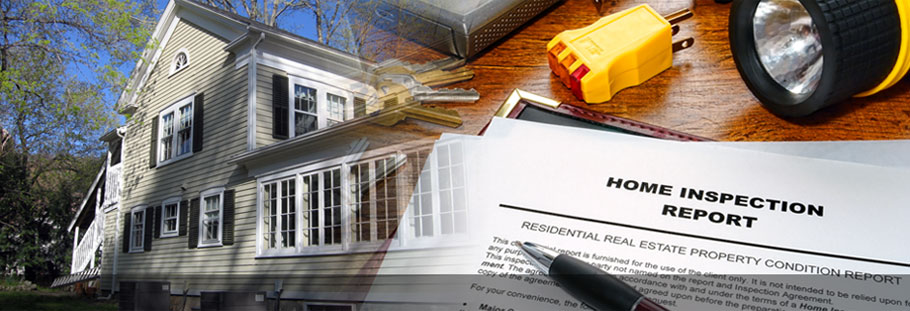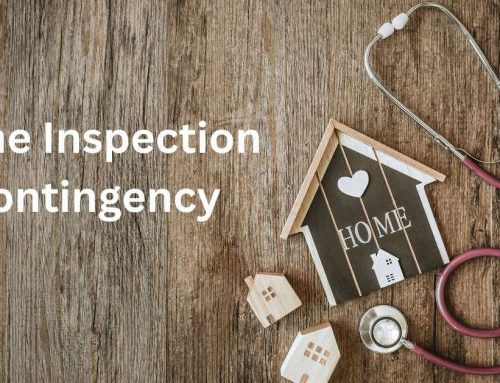WHAT IS A HOME INSPECTION?
A home inspection can give you with an unbiased analysis of the present strength of the home or condo, establish potential issues & defects, and may save your thousands of dollars in sudden repairs.
WHY DO YOU NEED A HOME INSPECTION?
Buying a new home is the most important investment most people will ever make. There is continually considerable risk involved when making such a large purchase decision, but a professional home inspection can significantly reduce your risk and help make the entire home buying method easier and less stressful.
WHAT DOES A HOME INSPECTION INCLUDE?
- Structural Components: Foundation, walls, trusses, hurricane straps, etc.
- Exterior: Driveway, walkways, fascia, soffits, flashing, roofing, grading and drain systems, etc.
- Electrical: Electrical panel, grounding, wiring, outlets, GFCI outlets (ground fault circuit interrupters), sub panels, etc.
- Plumbing: Water supply systems that include all fixtures, faucets and shut-offs, water heaters, drain/ waste systems, hose bibs, etc.
- HVAC: (Heating, venting, and air conditioning) condensing units (AC), air handlers to include coils, ducting, condensate drain lines, thermostats, etc.
- Attic: ventilation, wetness intrusion, insulation, trusses and rafters, pest intrusion problems.
- Appliances: washer dryer as well as water and vent connections, range, cooktop, ventilation, microwave, disposal, and dishwasher, etc.
- Interior: walls, trim, ceilings, cabinets, stairs, railing, etc.
We check all interior perimeter walls, around interior windows and doors for the presence of wetness with a “Promoter” wetness meter.
WHAT IS An FOUR-POINT HOME INSPECTION?
A four-point home inspection is an insurance inspection that assesses the condition of the following:
- Electrical – All of the most electrical outlets, the service panel, and circuit breakers are inspected and tested to see the load on the system. The age, installation, general condition, service loading, recent adoptions and life expectancy are checked as a part of the home inspection.
- Plumbing – The plumbing systems age, installation, general condition, leakages any appliances connected and life expectancy are checked.
- HVAC System – The HVAC system is checked to see the age, installation, general condition, running temperatures, ventilator balancing, future service requirements and life expectancy.
- Roof – The roof is checked to see the age, installation, and general condition, type of building materials used, obstructions and signs of harm or pest entry present.
This home inspection is designed to identify the condition and estimate the remaining life expectancy of the materials.
WHY DO YOU NEED An FOUR-POINT HOME INSPECTION?
The short answer is to get a new insurance policy or to renew an existing policy. A four-point home inspection covers the most common parts that lead to a claim. The insurance company needs to make sure they do not insure a home that has existing damage or is in poor condition.
WHAT IS A WIND MITIGATION INSPECTION?
Wind mitigation inspections are primarily completed during your home inspections or when a new roof is installed. We suggest a wind mitigation if you are looking for the maximum insurance savings potential. One of the most necessary things is to use a certified inspector.
WHAT ARE SIGNS OF WATER PROBLEMS?
- Water Leaks
- Past Flooding
- Condensation
If you’ve got had any future wetness issues in your home it is sometimes inevitable they will cause mold starting to grow. So if you recognize you’ve had some water issues in your home then it is a fairly good sign you could have mold.
Some signs that you have a wetness problem include water stains or discoloration on walls, floors or ceilings in your home. Seeing these may be a clue that there is mold growing inside or behind the material. Another sign of a wetness problem is surface abnormalities like peeling, bubbling or cracking of the paint or wallpaper. If your walls are bowed, bulging or crooked it most likely means wetness has gotten into them. Another clue is that if the surface of walls or different materials feels damp.
Water issues in homes are sometimes created by leaks. But if you already know that you have a water leak (such as leaking pipes or a leaking ceiling) then just that information by itself, even if you don’t see signs of water damage, is a good sign that you might have mold growing in your home around the area wherever the leak was.
Mold growth from leaks will usually be hidden. If the leak was behind a wall or other surface then any mold can most likely be hidden behind the surface too. Even though the leak was not behind a surface there might still be mold hidden out of view behind a wall or different surface from water that seeped through.
If your home has been flooded in the past then it is likely that mold would’ve begun to grow. Any mold would most likely be growing in places wherever flood water remained the longest such as in the basement. Floods will usually create mold growing out of view behind walls or under floors.
If you see a lot of condensation in your home then it is a signal that you have a high quantity of wetness and therefore a signal that you might have a mold problem. Condensation can occur on surfaces such as glass windows or metal pipes. The mold may be growing wherever the condensation builds up and collects. Rusting indoor pipes are a signal that you might have a lot of condensation in your home.
MOLD AND RADON FAQs
WHAT IS A MOLD INSPECTION?
A mold inspection may be a comprehensive visual inspection of your home to look for mold. After you have a mold inspection, the inspector can examine all areas of your home with numerous tools.
WHAT IS MOLD TESTING?
Mold testing tests the air quality in different areas of your home to create sure you do not need to evacuate. It is traditional to search out a small quantity of airborne mold throughout a mold testing, however, your mold testing contractor can allow you to understand if your rooms harbor an additional dangerous level.
WHY DO YOU NEED MOLD TESTING OR INSPECTION?
If you are having a problem with allergies then there is a good chance there can be mold growing somewhere in your home. Common allergic reactions to mold embrace sneezing, sore eyes and a runny nose or nasal congestion.
Do you notice your allergic reactions are worse after you are at home however you are feeling better once you go out? If so then it is especially possible you may have mold. If you discover that your allergies are worse in another building, like your workplace, then there can be mold growing there instead.
WHAT ARE COMMON SIGNS OF MOLD GROWTH?
Visible mold growth may appear like a clear sign of mold. But many of us do not notice little amounts of mold growth or they suppose it is simply soot or dirt. Typically people simply ignore visible mold in their home.
If you will be able to see mold growth, although it is only little, you must take action immediately. Small mold patches can spread and the proven fact that there is any mold shows that the conditions in your home are right for mold to grow. If you do not beware of mold it will shortly become an even bigger problem. Visible mold growth may also be a signal that there is a way larger mold colony growing hidden removed from view.
Sometimes you may not understand there is mold in your home, particularly if it is unusual looking mold. Some mold growth looks white and thread-like. Different mold seems as clusters of little black spots. Mold is often black, gray-brown, gray-green or white in color. Mold growing behind wallpaper made from vinyl will even seem orange, pink or purple.
WHY DO YOU NEED RADON TESTING?
There are cracks in the foundation. Nothing that is getting to threaten the stability of the home, however, they are there. Nooks, crannies, and holes through that seem an invisible threat. Colorless, odorless and undetectable by your average human, it is none the less the second leading reason for lung cancer.
Radon gas – even the name sounds ominous, evoking pictures of radiation and nuclear devastation is formed once metallic element within the soil decays. The gas then seeps through any access purpose into a home. Common entry points are cracks within the foundation, poorly sealed pipes, drain or the other loose purpose. Once within the home, the gas will collect ensure areas particularly basements and different low-lying, closed areas and build up over time to dangerous levels.
How widespread is that the problem?
Radon has been found in homes. Concentrations of radon-causing materials within the soil will be either natural or unreal. Homes engineered close to historic mining operations are also at higher risk. The only way to tell for sure is to own a home tested.
Buyers should remember of the radon risk in their area and confirm whether a radon check is desirable. The value of the take a look at will be designed into the house price. If take a look at results exist already, check that they’re recent or that the home has not been significantly restored since the check was performed. If unsure, get a new check done. If you are selling a home, having a recent radon check is a nice plan. By being proactive, you will assure potential buyers that there is no risk and avoid the problem from the beginning.
So whether you have an old home or a new one, radon is a reality. However, it is a reality that we will support. Correct testing and mitigation will eliminate radon as a health threat.



Leave A Comment